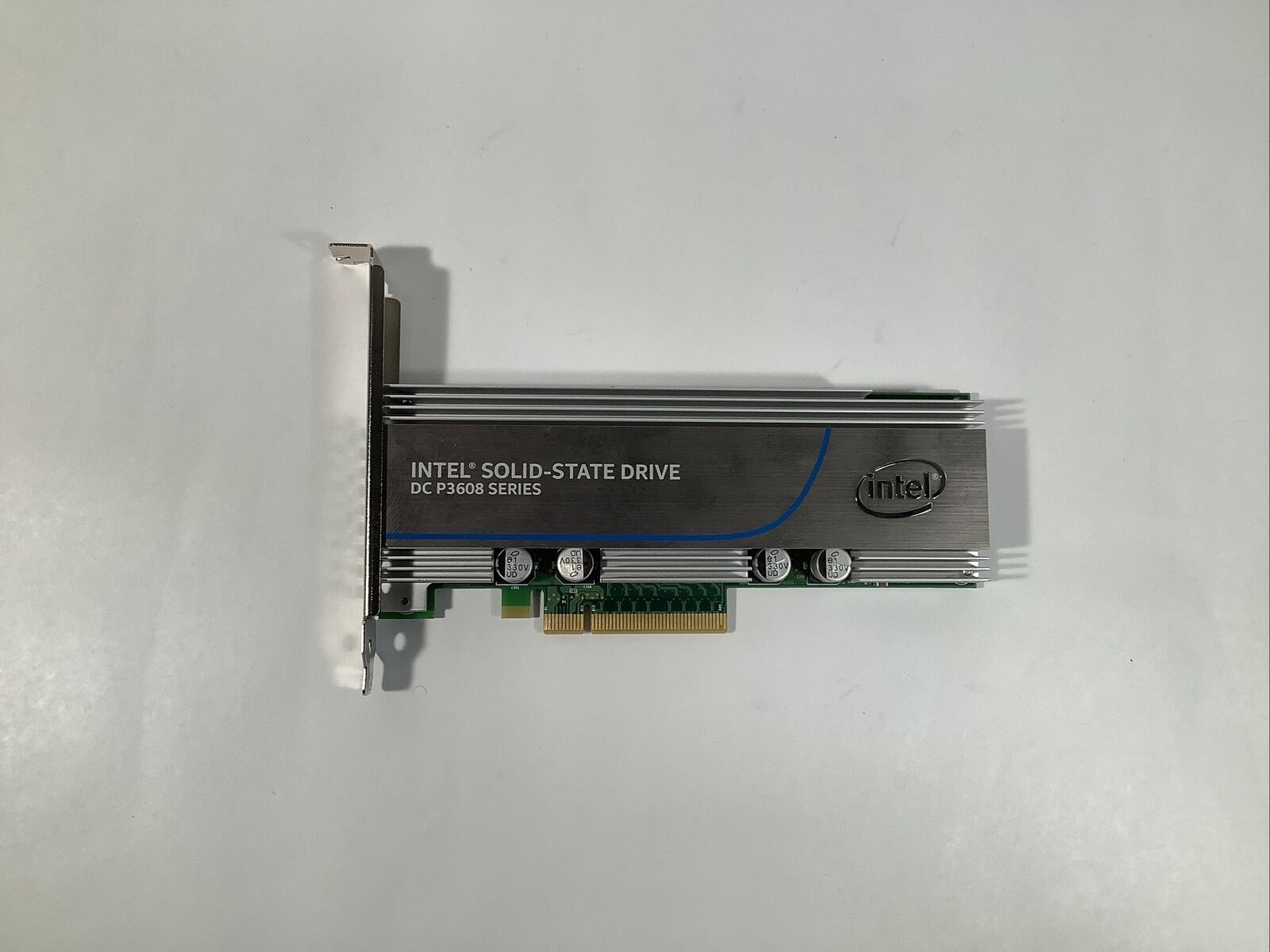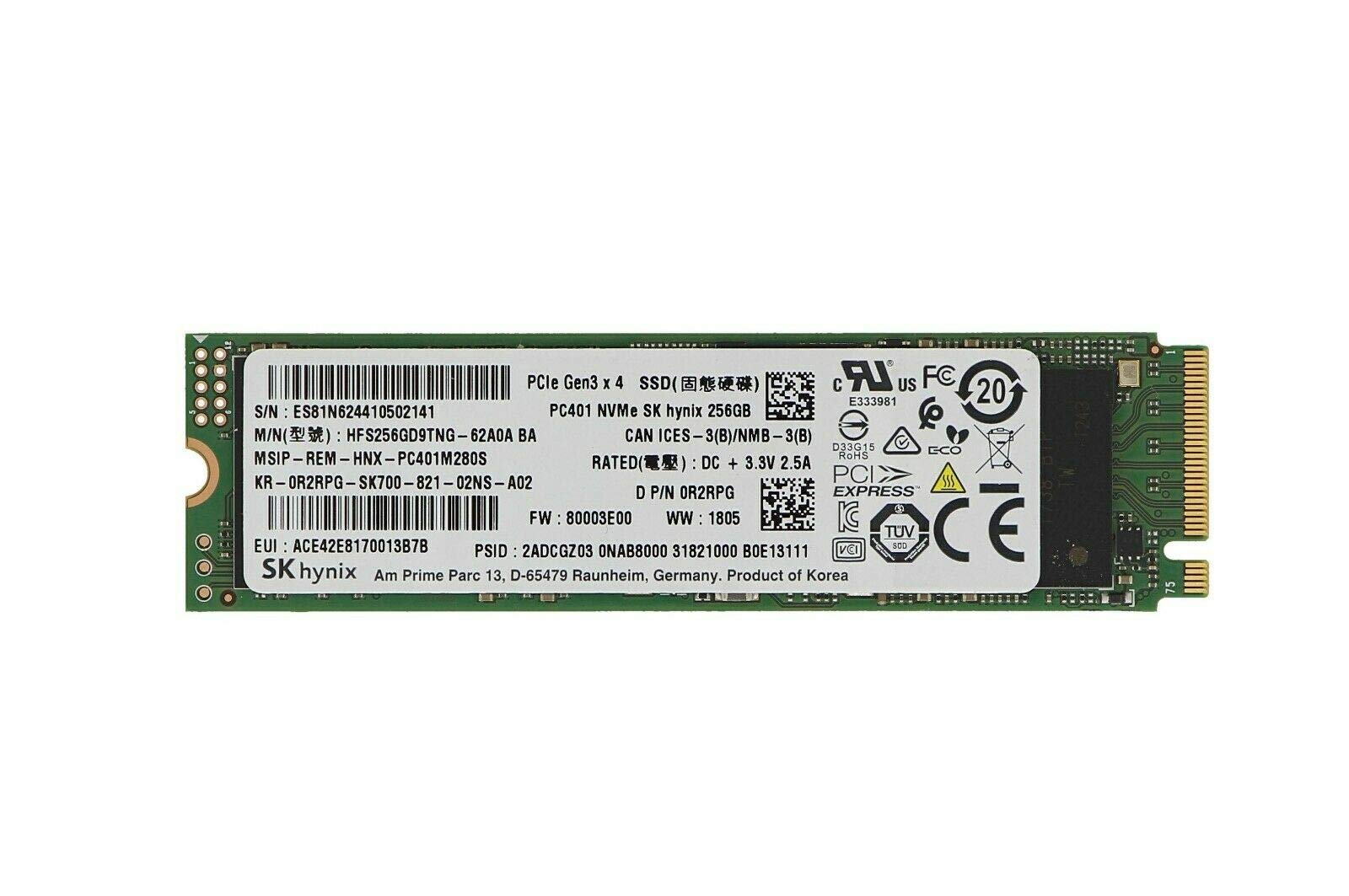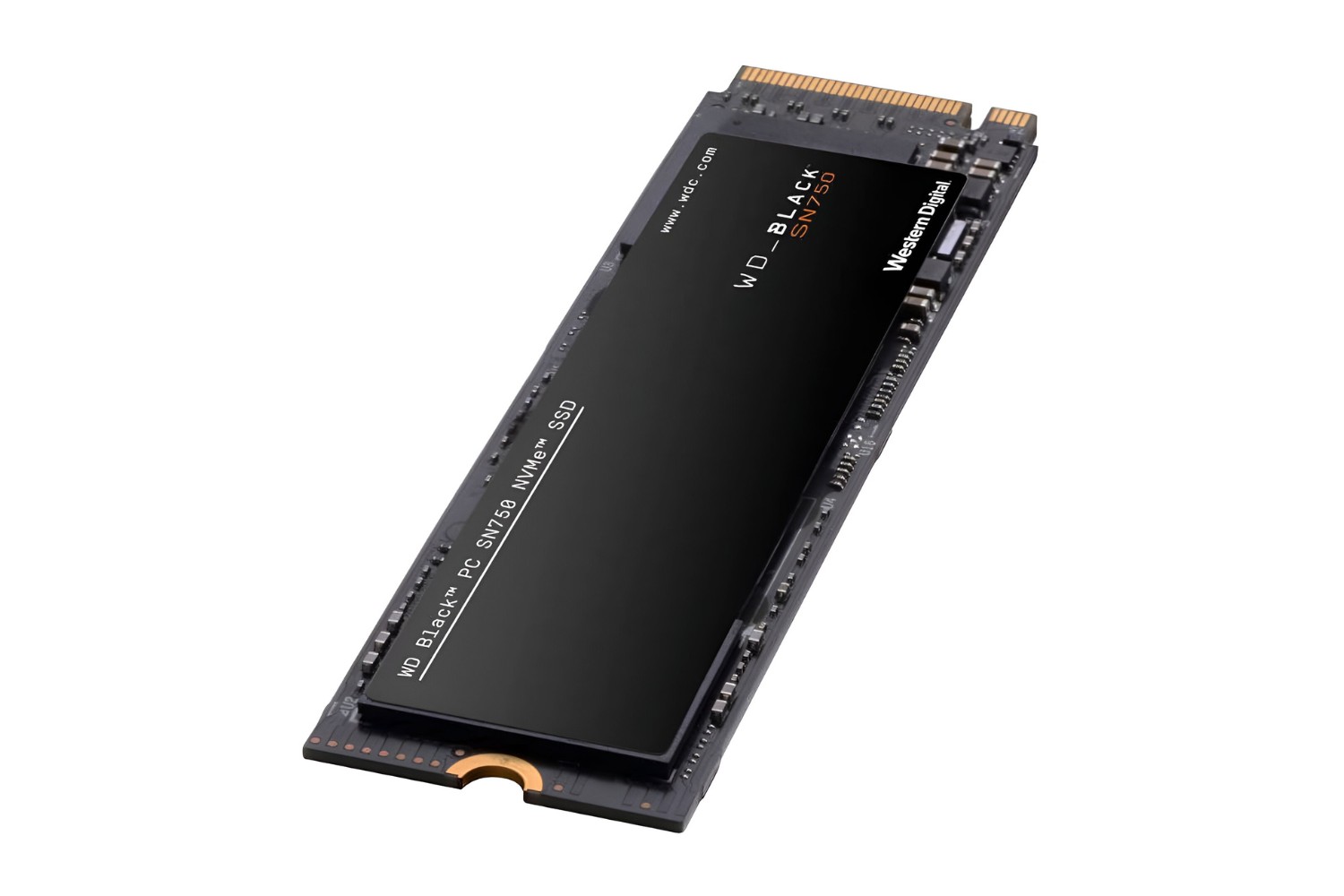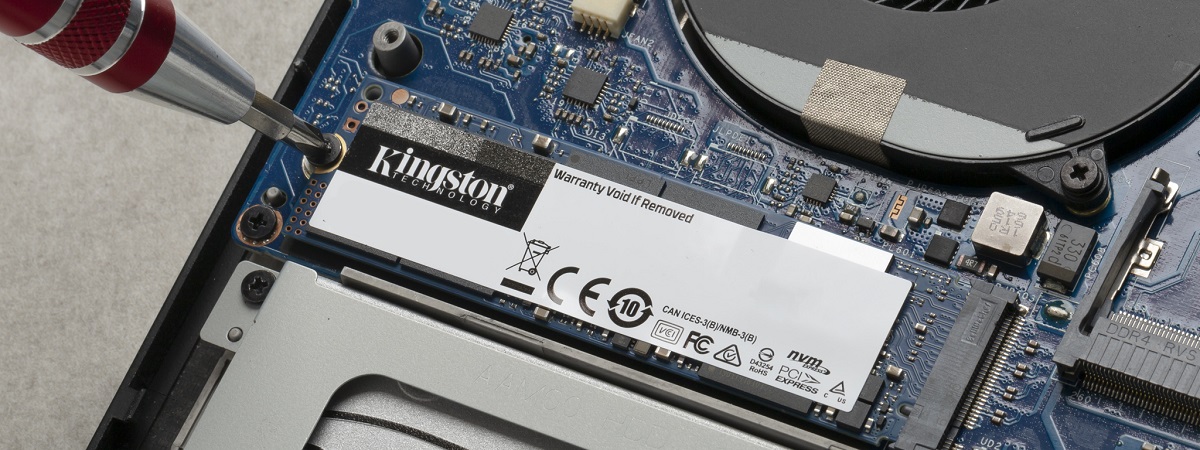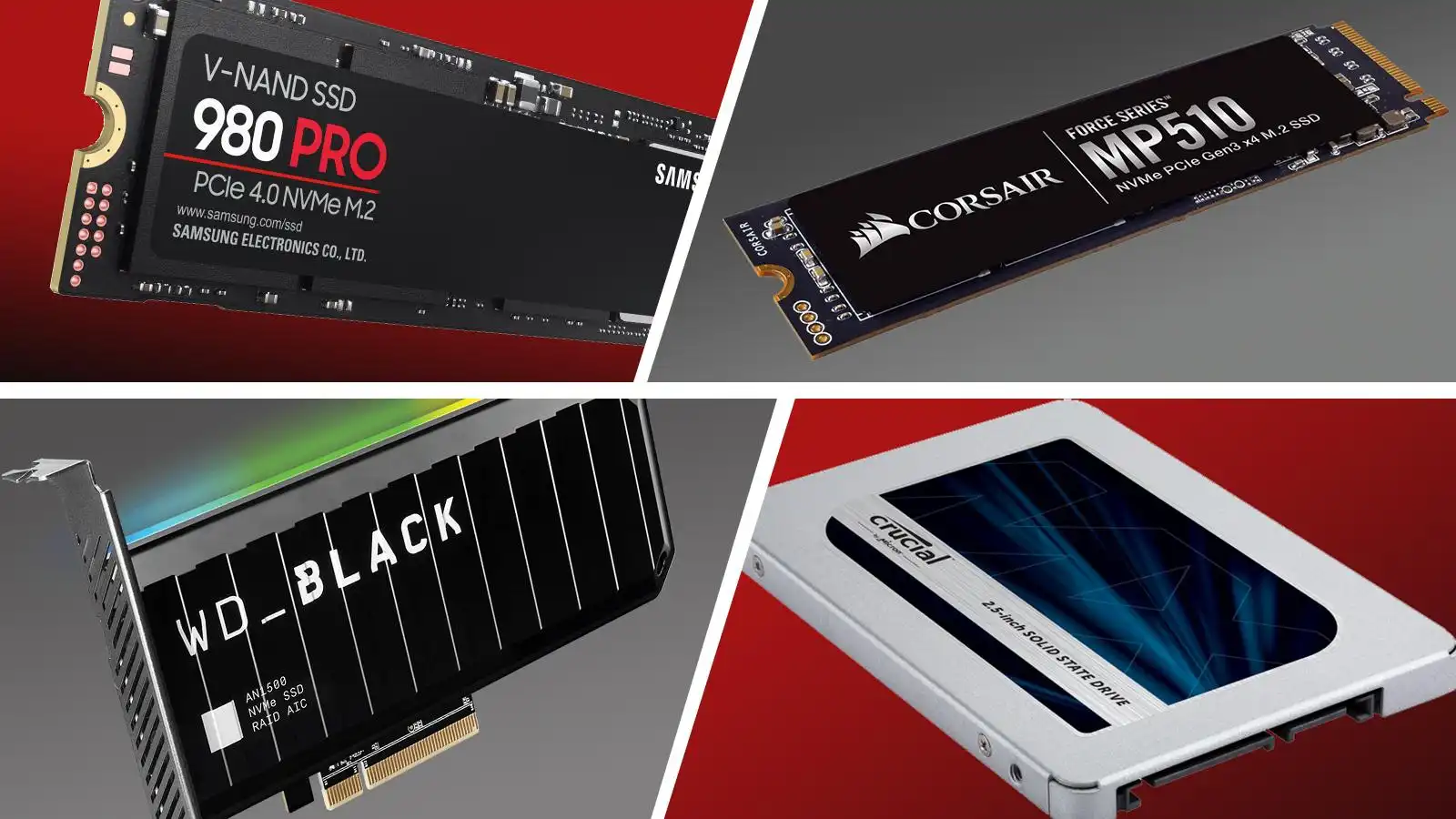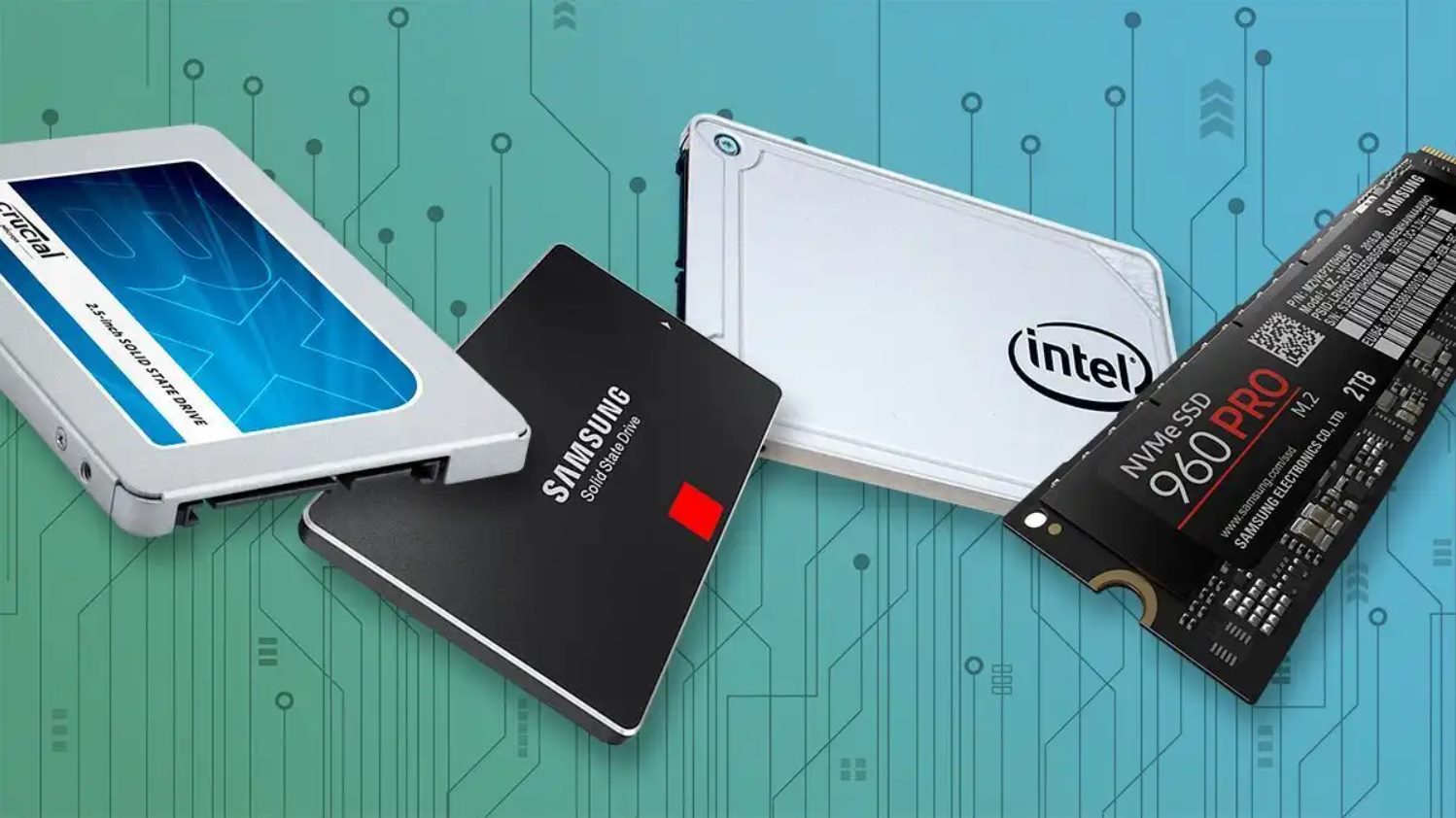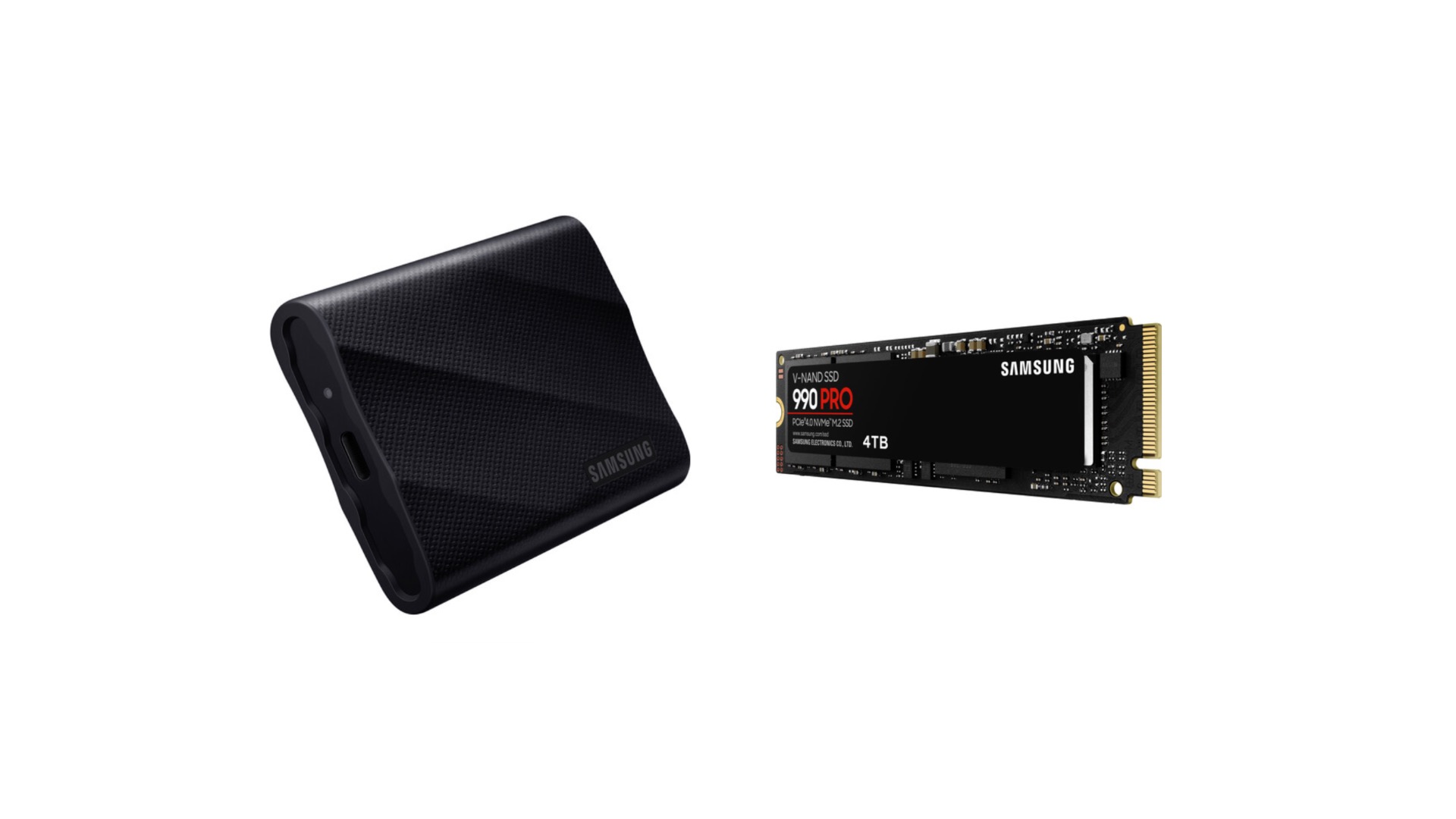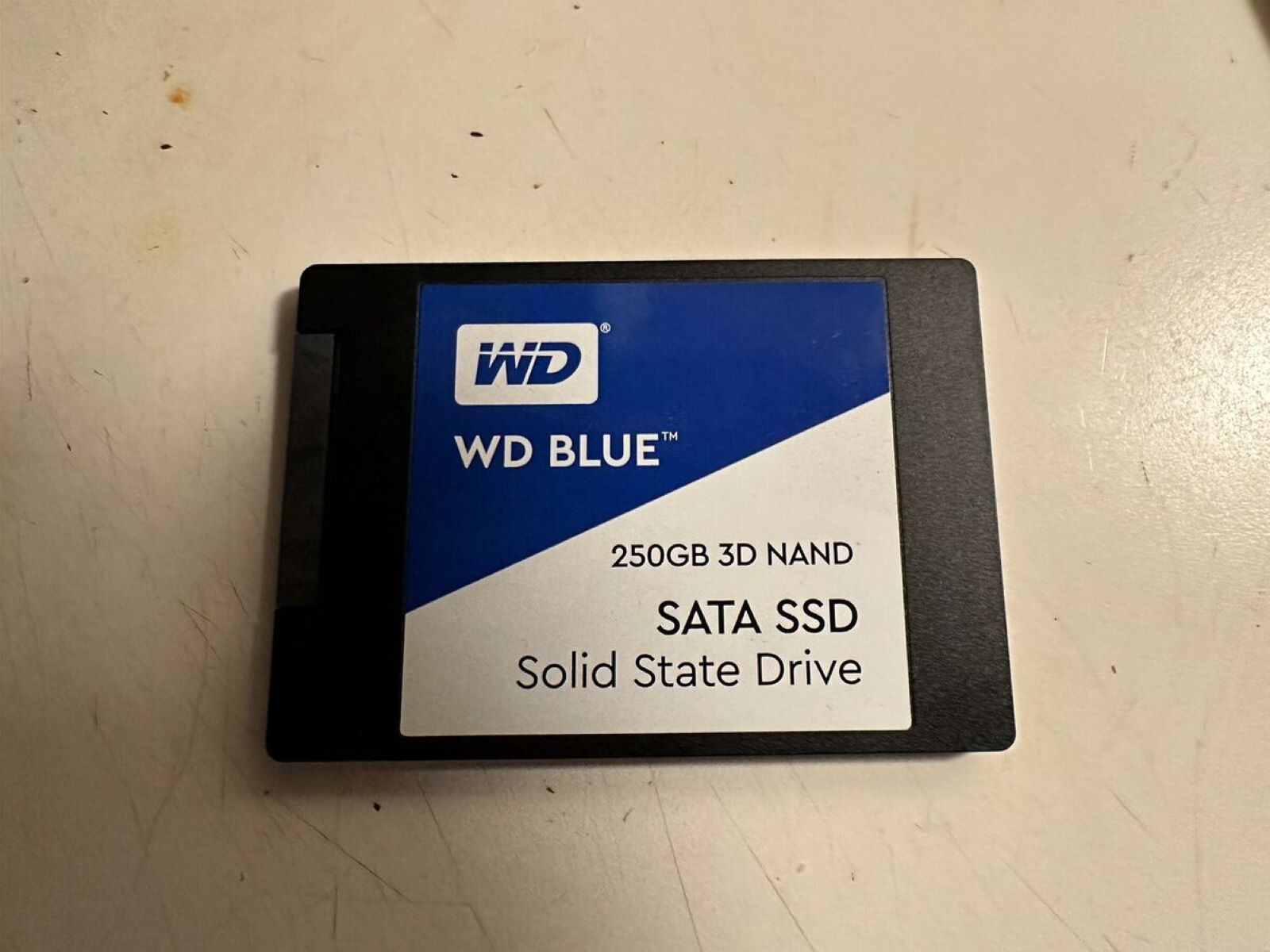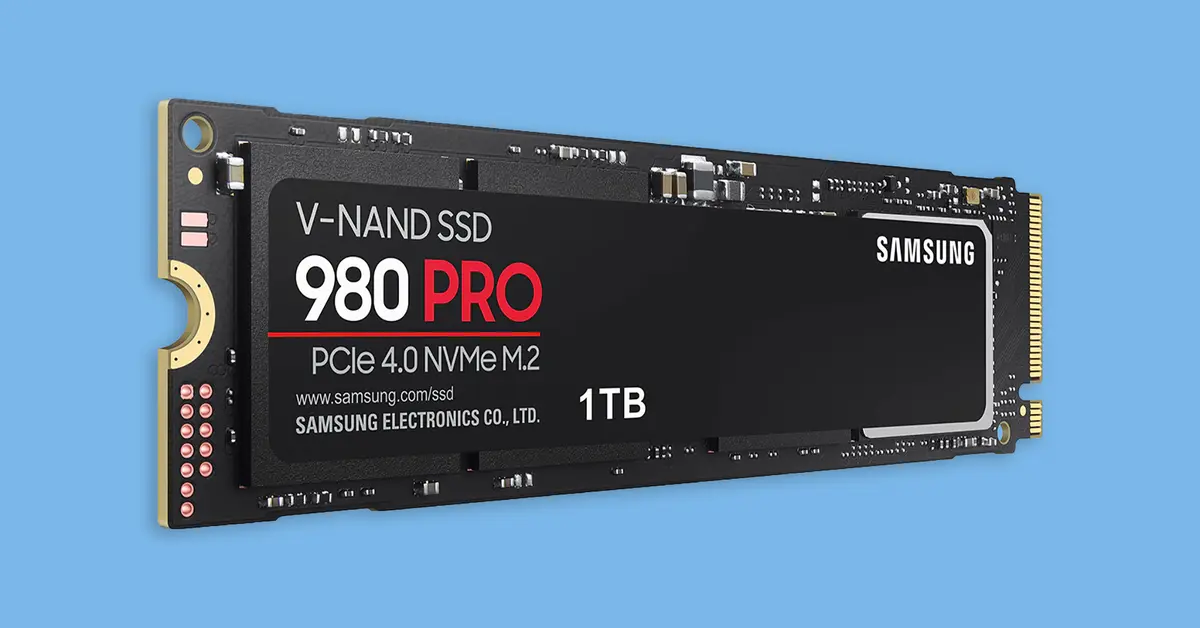Introduction
As technology continues to advance at a rapid pace, storage solutions have also seen significant improvements. Solid State Drives (SSDs) have revolutionized data storage, offering faster speeds and improved performance compared to traditional hard disk drives (HDDs). Among the various types of SSDs available, PCIe (Peripheral Component Interconnect Express) SSDs have gained popularity for their exceptional performance and efficiency.
PCIe, an expansion card interface used to connect computer components, provides a faster and more direct connection to the motherboard compared to other interfaces like SATA (Serial Advanced Technology Attachment). This allows PCIe SSDs to take full advantage of the available bandwidth and achieve outstanding data transfer rates.
A solid state drive (SSD) is a storage device that uses flash memory to store data, unlike traditional HDDs that use spinning disks. By eliminating moving parts, SSDs offer faster access times, reduced power consumption, and enhanced reliability.
When PCIe and SSD technologies are combined, the result is a powerful storage solution that offers exceptional speed, reliability, and performance. PCIe SSDs are becoming increasingly popular in both consumer and enterprise applications, powering everything from high-end gaming systems to data centers.
In this article, we will explore the features, advantages, disadvantages, and applications of PCIe SSDs. Additionally, we will provide insights on how to choose the right PCIe SSD for your specific needs.
What is PCIe?
Peripheral Component Interconnect Express (PCIe) is a high-speed expansion card interface commonly used in modern computers and servers. It serves as a primary interconnect between the computer’s motherboard and various components, such as graphics cards, network adapters, and storage devices.
Unlike older interfaces like PCI and PCI-X, PCIe offers significantly higher data transfer rates, making it ideal for applications that require high bandwidth. It utilizes point-to-point serial connections, allowing each component to have its dedicated communication pathway to the CPU.
PCIe slots are typically found on motherboards and come in different sizes, including x1, x4, x8, and x16. The “x” represents the number of lanes available for data transmission. The more lanes a PCIe slot has, the faster the data transfer rate.
One of the significant advantages of PCIe is its scalability. It allows for multiple components to be integrated into a single system while maintaining high performance. Additionally, PCIe supports hot-swapping, enabling components to be added or removed without shutting down the computer.
With its high bandwidth and low latency, PCIe has become a preferred interface for connecting storage devices, leading to the development of PCIe SSDs.
Overall, PCIe provides a robust and versatile interface that enables high-speed data transfer between components in a computer system. Its capabilities have paved the way for significant advancements in storage technology, enabling faster and more efficient data storage solutions.
What is a Solid State Drive (SSD)?
A Solid State Drive (SSD) is a type of storage device that uses flash memory to store data. Unlike traditional hard disk drives (HDDs) that rely on spinning disks and mechanical components, SSDs have no moving parts, which makes them faster, more durable, and energy-efficient.
SSDs are composed of memory chips that use NAND flash memory technology. These chips store data even when the power is turned off, allowing for persistent data storage. The data is written and read electronically, resulting in faster access times and improved performance compared to HDDs.
One of the key advantages of SSDs is their speed. SSDs have significantly faster read and write speeds compared to HDDs. This means that applications load more quickly, files transfer faster, and the overall system performance is greatly improved.
SSDs also offer improved reliability. Since they lack moving parts, SSDs are less prone to mechanical failure, making them more durable and resistant to shock and vibration. This reliability translates into a longer lifespan for the drive and a decreased likelihood of data loss.
Furthermore, SSDs consume less power than HDDs. With no spinning disks or moving mechanical parts, SSDs require less energy to operate, resulting in lower power consumption and extended battery life for laptops and other portable devices.
In recent years, SSDs have become increasingly popular due to their numerous advantages and falling prices. They are now commonly found in laptops, desktop computers, gaming consoles, and even high-performance servers.
It is worth noting that while SSDs offer several benefits, they have a limited number of write cycles before the memory cells wear out. However, modern SSDs are equipped with technologies such as wear leveling and over-provisioning to mitigate this issue and ensure a longer lifespan.
In summary, Solid State Drives (SSDs) are storage devices that use flash memory to store data. They deliver fast speeds, improved reliability, and energy efficiency compared to traditional HDDs. With their increasing affordability and performance, SSDs have become the preferred choice for storage in modern computing devices.
How does a PCIe SSD work?
A PCIe SSD (Peripheral Component Interconnect Express Solid State Drive) uses the PCIe interface to connect to the motherboard and transfer data. Unlike traditional storage drives that connect via SATA or other slower interfaces, PCIe SSDs take advantage of the high bandwidth of PCIe to deliver exceptional performance.
Inside a PCIe SSD, there are NAND flash memory chips that store data. These chips are organized into memory modules, which are further combined to form a solid-state drive. The PCIe interface allows for direct communication between the SSD and the CPU, bypassing the slower SATA controller.
One of the essential components in a PCIe SSD is the controller. The controller manages the data flow and performs various operations, including error correction, wear leveling, and garbage collection. It ensures the smooth functioning of the SSD and maintains data integrity.
The PCIe interface provides multiple lanes for data transmission, offering higher bandwidth compared to SATA. PCIe SSDs typically use multiple lanes to achieve faster speeds. The number of lanes used varies depending on the SSD model and the available PCIe slots on the motherboard.
When data is written to a PCIe SSD, it is first stored in the SSD’s cache. The controller manages the caching process to optimize performance. Once the data is in the cache, it is then written to the NAND flash memory. Similarly, when data needs to be retrieved, the controller fetches it from the NAND flash memory and transfers it to the cache before delivering it to the CPU.
As the PCIe interface allows for parallel data transfer, PCIe SSDs can achieve significantly higher read and write speeds compared to SATA-based SSDs. This makes them ideal for demanding applications that require fast storage, such as gaming, content creation, and data-intensive tasks.
It is important to note that the performance of a PCIe SSD also depends on the generation of the PCIe interface. Newer generations such as PCIe 3.0 and PCIe 4.0 offer higher speeds compared to older versions. It is essential to ensure compatibility between the SSD and the PCIe slot on the motherboard to maximize performance.
In summary, a PCIe SSD utilizes the high-speed PCIe interface to deliver exceptional performance. With a dedicated connection to the CPU, the SSD can achieve fast transfer speeds and low latency. By eliminating the limitations of the SATA interface, PCIe SSDs offer improved storage performance, making them an excellent choice for high-performance computing needs.
Advantages of a PCIe SSD
PCIe (Peripheral Component Interconnect Express) Solid State Drives (SSDs) offer several significant advantages compared to other types of storage devices. These advantages make PCIe SSDs increasingly popular in a wide range of applications. Here are some key benefits of using a PCIe SSD:
1. High-Speed Performance: PCIe SSDs leverage the high bandwidth of the PCIe interface to deliver exceptional data transfer speeds. They can provide faster read and write speeds compared to other types of SSDs, resulting in improved system responsiveness and reduced loading times for applications and files.
2. Low Latency: The direct connection between the PCIe SSD and the CPU minimizes latency, enabling quicker data access and reduced delays. This is particularly beneficial for tasks that rely on fast data retrieval, such as gaming, high-definition video editing, and data-intensive analysis.
3. Scalability: PCIe offers scalability, allowing for the integration of multiple SSDs in a single system. This scalability enables users to build high-capacity storage solutions or configure SSDs in RAID arrays for enhanced performance and data redundancy.
4. Enhanced Concurrent Operations: PCIe SSDs can handle multiple input and output operations simultaneously, thanks to their parallel architecture. This capability makes them well-suited for multitasking environments and workloads that require handling multiple demanding applications simultaneously.
5. Compatibility: PCIe SSDs are compatible with various operating systems and can be seamlessly integrated into existing systems. They support popular file systems and can be used as a primary storage device or as a secondary storage option alongside traditional HDDs or SATA SSDs.
6. Improved Power Efficiency: Compared to traditional hard disk drives, PCIe SSDs consume less power. The absence of moving parts and improved efficiency in data access contribute to reduced power consumption, making them ideal for portable devices such as laptops and tablets where battery life is crucial.
7. Future-Proof Technology: PCIe continues to evolve and offers faster speeds with each new generation. Investing in a PCIe SSD ensures compatibility with future advancements in storage technology and provides room for potential performance upgrades.
Overall, the advantages provided by PCIe SSDs, including high-speed performance, low latency, scalability, compatibility, improved power efficiency, and future-proof technology, make them an attractive choice for individuals and organizations seeking high-performance storage solutions.
Disadvantages of a PCIe SSD
While PCIe (Peripheral Component Interconnect Express) Solid State Drives (SSDs) offer numerous advantages, it is important to consider their limitations and potential drawbacks as well. Here are some disadvantages of using a PCIe SSD:
1. Cost: PCIe SSDs tend to be more expensive compared to SATA-based SSDs or traditional hard disk drives (HDDs). The advanced technology utilized in PCIe SSDs, coupled with their higher performance capabilities, contributes to their higher price tag. This may be a limiting factor for those on a tight budget.
2. Limited Compatibility: PCIe SSDs require a compatible PCIe slot on the motherboard for installation. Older systems may lack PCIe slots or have limited availability, thereby restricting the use of PCIe SSDs. It is essential to check the compatibility of the motherboard before purchasing a PCIe SSD.
3. Heat Generation: PCIe SSDs can generate more heat compared to other storage devices due to their high-speed data transfer and processing capabilities. Monitoring and managing the temperature, especially in compact systems or environments with limited airflow, is crucial to maintain optimal performance and prolong the lifespan of the SSD.
4. Noisy Operation: Although PCIe SSDs have no moving parts, they can produce some noise due to voltage regulators and other components on the SSD card. While the noise is minimal compared to rotating HDDs, silent operation may still be a requirement for certain applications or environments.
5. Limited Storage Capacity: PCIe SSDs generally have smaller storage capacities compared to larger HDDs. While the capacity of PCIe SSDs has been increasing over time, users looking for massive storage capacities might find that PCIe SSDs are limited in their offerings. However, using multiple PCIe SSDs in a RAID configuration can help overcome this limitation.
6. Compatibility with Older Systems: Some older operating systems or software may not fully support PCIe SSDs out of the box. It is essential to ensure that the operating system, drivers, and firmware are updated for optimal compatibility and performance.
7. Limited Lifespan: Like all flash-based storage devices, PCIe SSDs have a finite number of write cycles before the cells may wear out. However, modern PCIe SSDs incorporate advanced wear-leveling algorithms and error correction techniques to mitigate this issue and extend the lifespan of the drive.
In summary, while PCIe SSDs come with several advantages, including high performance and low latency, they also have some drawbacks, such as higher cost, limited compatibility, heat generation, limited storage capacity, potential noise, compatibility with older systems, and limited lifespan. It is important to consider these factors when deciding on the appropriate storage solution for your specific needs.
Comparison with Other Types of SSDs
When choosing a Solid State Drive (SSD), there are various options available, including PCIe (Peripheral Component Interconnect Express) SSDs, SATA (Serial Advanced Technology Attachment) SSDs, and M.2 SSDs. Let’s compare these types of SSDs to better understand their differences:
1. Performance: PCIe SSDs generally offer the highest performance among these three types. The direct connection to the motherboard via PCIe allows for faster data transfer rates and lower latency compared to SATA and M.2 SSDs. However, the performance difference may vary depending on the specific model and generation of the SSD.
2. Interface: PCIe SSDs use the PCIe interface, while SATA SSDs connect using the SATA interface. M.2 SSDs can use either PCIe or SATA protocols, depending on the specific M.2 slot. PCIe SSDs provide the advantage of higher bandwidth and more direct communication with the CPU.
3. Form Factor: PCIe SSDs typically come in add-in card form factors, which require dedicated PCIe slots on the motherboard. SATA SSDs and M.2 SSDs, on the other hand, come in smaller form factors, making them suitable for laptops, ultrabooks, and compact systems.
4. Compatibility: PCIe SSDs require a compatible PCIe slot on the motherboard, while SATA SSDs are compatible with the standard SATA connectors found in most computers. M.2 SSDs require a compatible M.2 slot, which can support either PCIe or SATA protocols.
5. Capacity: In terms of capacity, all three types of SSDs offer a wide range of options. PCIe SSDs and SATA SSDs generally provide higher storage capacities, while M.2 SSDs are available in smaller form factors and typically offer lower capacities.
6. Cost: PCIe SSDs tend to be more expensive compared to SATA SSDs and M.2 SSDs. The higher performance capabilities and the advanced technology incorporated in PCIe SSDs contribute to their higher price point. SATA SSDs and some M.2 SSDs offer a more cost-effective option for users who prioritize affordability.
7. Purpose and Use Cases: PCIe SSDs are often preferred for high-performance applications that require fast data transfer rates, such as gaming, content creation, and data analysis. SATA SSDs and M.2 SSDs are suitable for general-purpose use and can provide significant performance improvements over traditional HDDs.
Ultimately, the choice between PCIe SSDs, SATA SSDs, and M.2 SSDs depends on factors such as performance requirements, compatibility with existing hardware, form factor suitability, budget, and specific use cases. Understanding the differences and considering your specific needs will help you make an informed decision.
Common Applications of PCIe SSDs
Thanks to their exceptional performance and speed, PCIe (Peripheral Component Interconnect Express) Solid State Drives (SSDs) are utilized in a wide range of applications. Here are some common uses of PCIe SSDs:
1. Gaming: PCIe SSDs are highly sought after by gamers due to their ability to enhance gaming performance. They offer faster loading times, reduced in-game latency, and improved responsiveness, which can provide a competitive advantage and an immersive gaming experience.
2. Content Creation: PCIe SSDs are ideal for content creators working with large file sizes. Video editing, graphic design, and 3D rendering applications can benefit from the high-speed data transfer and quick access to files that PCIe SSDs provide. This allows for smoother workflow and increased productivity.
3. Data Centers: PCIe SSDs are commonly deployed in data centers that require high-speed storage for handling large amounts of data. They are utilized in applications such as server virtualization, database management, cloud computing, and big data analytics, where fast and reliable storage is essential.
4. Workstations: PCIe SSDs are popular among professionals who require high-performance storage on their workstations. This includes fields such as engineering, architecture, video editing, animation, and audio production, where fast data access and transfer times are paramount for efficient workflow and multitasking.
5. High-Performance Computing: In industries like scientific research, financial modeling, and artificial intelligence, PCIe SSDs play a crucial role in accelerating complex computations and reducing data processing times. The high-speed performance of PCIe SSDs enables faster data access and analysis, improving the overall efficiency of high-performance computing systems.
6. Virtualization: PCIe SSDs are used in virtualization environments to enhance the performance of virtual machines. With multiple virtual machines running concurrently, PCIe SSDs ensure that data access and disk operations are handled efficiently, reducing bottlenecks and improving the overall responsiveness of virtualized systems.
7. Professional Photography: Photographers who work with large RAW files can benefit from the high-speed transfer rates of PCIe SSDs. With faster data access and file transfers, photographers can spend less time waiting for files to load and more time focusing on their creative work.
8. Audio and Video Production: PCIe SSDs are highly advantageous in audio and video production workflows, where large media files need to be accessed and processed in real-time. They enable seamless playback and rendering of high-resolution video and audio files, reducing the time required for media production tasks.
9. High-End Consumer PCs: Enthusiasts and power users looking for top-notch performance in their personal computers often opt for PCIe SSDs. These drives significantly enhance system responsiveness and boost the overall user experience in tasks such as booting up the system, launching applications, and transferring files.
As technology continues to advance, PCIe SSDs are finding applications in various fields that require fast and reliable storage solutions. Their ability to deliver exceptional performance and low latency makes them a valuable asset in improving productivity, efficiency, and user experience in a multitude of systems and applications.
Choosing the Right PCIe SSD for Your Needs
When selecting a PCIe (Peripheral Component Interconnect Express) Solid State Drive (SSD), there are several factors to consider to ensure that it meets your specific requirements. Here are some key considerations to help you choose the right PCIe SSD:
1. Capacity: Determine the storage capacity you need for your data. PCIe SSDs come in varying capacities, ranging from smaller capacities suitable for the operating system and applications, to larger capacities for storing large media files or running resource-intensive applications. Consider your storage needs now and in the future to ensure sufficient capacity.
2. Performance: Assess your performance requirements. Look for PCIe SSDs with high read and write speeds for faster data transfer and reduced latency. Consider the specifications such as sequential read and write speeds, random read and write speeds, and input/output operations per second (IOPS) to gauge the performance capabilities of the SSD.
3. Form Factor: Verify the form factor compatibility with your system. PCIe SSDs are available in add-in card form factors, requiring specific PCIe slots on the motherboard. Ensure that your motherboard has an available compatible PCIe slot to accommodate the SSD. It’s also essential to check the physical dimensions of the SSD to ensure it fits your system’s physical constraints.
4. Interface and Protocol: Determine whether you need a PCIe Gen 3.0 or Gen 4.0 SSD, depending on your system’s compatibility and desired level of performance. Additionally, consider whether you require an NVMe (Non-Volatile Memory Express) or AHCI (Advanced Host Controller Interface) protocol SSD, depending on your system’s capabilities and requirements.
5. Reliability and Endurance: Consider the endurance and reliability specifications of the SSD. Look for information on the drive’s Total Bytes Written (TBW) rating, Mean Time Before Failure (MTBF), and any included error correction features. These specifications give you an idea of the SSD’s endurance and its expected lifespan under various workloads.
6. Price-Performance Ratio: Compare the pricing of different PCIe SSDs and evaluate their price-performance ratio. Consider the balance between cost and performance to ensure you get the best value for your investment. Keep in mind that higher-performing PCIe SSDs tend to be more expensive than lower-performing options.
7. Brand Reputation and Customer Support: Research the reputation and reliability of the SSD manufacturer. Check for customer reviews and feedback to gauge the overall satisfaction with the brand and its products. Additionally, ensure that the manufacturer provides adequate customer support, including warranty coverage and firmware updates.
8. Compatibility and System Requirements: Verify the compatibility of the PCIe SSD with your system’s operating system, driver support, and firmware requirements. Ensure that your motherboard’s BIOS/UEFI supports PCIe SSDs and that the necessary drivers are available for seamless installation and optimal compatibility.
By considering these factors and evaluating your specific needs, you can confidently select a suitable PCIe SSD that meets your performance, capacity, compatibility, and budget requirements. Remember to balance your priorities and carefully review the specifications to make an informed decision.
Conclusion
PCIe (Peripheral Component Interconnect Express) Solid State Drives (SSDs) have revolutionized the storage industry with their exceptional performance, fast data transfer speeds, and low latency. These SSDs leverage the high-speed PCIe interface to deliver faster access times, reduced loading times, and improved overall system performance compared to traditional hard disk drives (HDDs) and SATA-based SSDs.
By utilizing PCIe’s high bandwidth and direct connection to the CPU, PCIe SSDs have found applications in various fields, including gaming, content creation, data centers, high-performance computing, and virtualization environments. Their ability to handle large data sets, provide quick storage access, and minimize latency makes them an ideal choice for demanding workloads and resource-intensive applications.
Before choosing a PCIe SSD, it is crucial to consider factors such as storage capacity, performance requirements, form factor compatibility, interface and protocol specifications, reliability, price-performance ratio, brand reputation, and compatibility with your system and software applications.
While PCIe SSDs offer numerous advantages, including high-speed performance, low latency, scalability, and improved power efficiency, they may also have drawbacks such as higher cost, limited compatibility, heat generation, limited storage capacity, potential noise, compatibility with older systems, and limited lifespan.
To make an informed decision, carefully evaluate your needs and priorities, compare the available options, and select a PCIe SSD that provides the right combination of capacity, performance, reliability, compatibility, and affordability for your specific requirements.
With their continued evolution and advancements in storage technology, PCIe SSDs are expected to play a crucial role in meeting the growing demands for fast and reliable storage solutions in various industries, ensuring optimal performance and enhanced user experiences.







